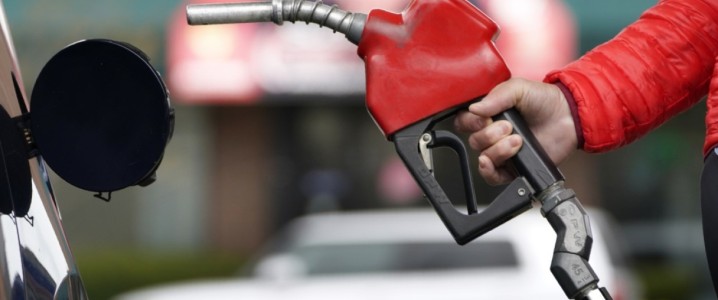
Motorists in the United States are expected to see a significant decline in gasoline prices this summer, potentially falling below $3 per gallon for the first time in over four years. This forecast comes as a result of increased imports contributing to higher inventories while adverse weather conditions suppress fuel demand.
As of now, the national average price of gasoline stands at $3.15 per gallon, marking the lowest recorded level during summer months since 2020. According to data from GasBuddy, many drivers are already benefiting from prices below $3, with a current average of $2.99 per gallon and some regions reporting prices as low as $2.79. The median gas price across the country is $2.97 per gallon.
Despite this positive trend for many, certain states are still experiencing high prices at the pump. California leads the nation with an average of $4.49 per gallon, followed closely by Hawaii at $4.47 and Washington at $4.41. The disparity in pricing is notable, with the top 10% of gas stations charging an average of $4.34 per gallon, nearly double the price at the bottom 10% which offers gasoline at about $2.54 per gallon.
As for diesel, most U.S. drivers are paying an average of $3.49 per gallon, with a median price of $3.59. The top-tier stations are charging around $4.63 per gallon, while the lower tier sits at an average of $3.07 per gallon.
Factors Influencing Price Changes
Recent reports indicate that gasoline prices have decreased by 8.3% year-over-year as of June, driven by a more than 20% drop in oil prices due to concerns over demand and potential oversupply from OPEC+. Specifically, fuel demand has dipped by 2.5% year-over-year in the week ending July 4, suggesting a weakening appetite for fuel during what is typically a high-demand season.
The U.S. Energy Information Administration (EIA) reports that the average supply of gasoline products over the last four weeks was 9.2 million barrels per day, reflecting a 1% year-over-year decline. Factors such as extreme heat across various regions have contributed to this decrease, as high temperatures tend to discourage driving.
Beyond immediate weather impacts, long-term trends are also reshaping gasoline consumption. Changes in driving habits, particularly due to the rise of remote work since the pandemic, have likely led to a sustained reduction in gasoline use, which has not yet returned to its historic peak of over 9.3 million barrels per day recorded in 2018.
The Rise of Electric Vehicles
Another influential factor in the evolving landscape of fuel demand is the increasing adoption of electric vehicles (EVs). Currently, it is estimated that EVs displace around 3.5 million barrels of oil per day globally, significantly impacting U.S. gasoline consumption. According to the International Energy Agency (IEA), the global fleet of EVs is predicted to replace over 5 million barrels of crude daily by 2030, with strong growth expected in markets such as China and Europe.
In Norway, which leads in EV adoption, approximately 88% of new cars sold in 2024 are fully electric. This shift has resulted in a 12% decrease in oil demand from 2021 to 2024. As a significant supplier of natural gas to Europe, Norway’s energy landscape plays a crucial role in the broader context of global fuel markets.
As summer progresses, motorists across the United States will be watching closely as prices fluctuate, hoping for continued relief at the pump amidst changing market dynamics and evolving vehicle technologies.






